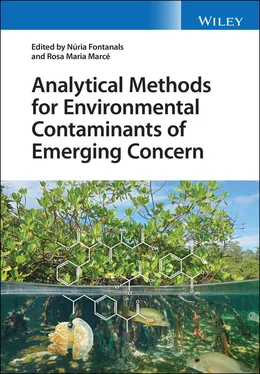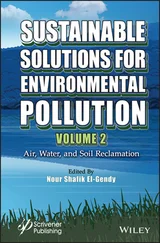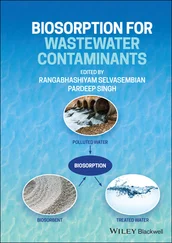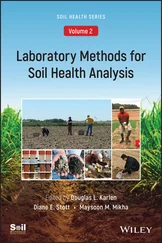SPME is a simple, sensitive, rapid and solvent-free technique in which the organic compounds are adsorbed/absorbed (depending on fiber coating) directly from the aqueous sample into the fiber and then thermally desorbed at the injection port of the GC, considerably simplifying the analysis procedure. In this sense, the availability of SPME devices in latest GC equipment leads to the complete automatization of the analytical process, allowing for improving data quality, the productivity of staff and instruments, and increasing the sample throughput [83]. This has been demonstrated in recent methodologies involving the on-line combination of SPME and GC coupled to high-resolution mass spectrometry (HRMS) allowing for the determination of priority substances, including pesticides, in surface and wastewaters [84, 85] providing limits of quantification (LOQs) at ng l −1levels. Novel SPME sorbents, such as magnetic deep eutectic solvent (DES)-based polymeric hydrogel [86] and carbon nanomaterials [87, 88], have been successfully applied for the monitoring of pesticides in different water resources as can be seen in Table 1.1.
On the other hand, vacuum-assisted evaporative concentration has been effective for the monitoring of organic micropollutants [89], including pesticides such as chlorothalonil and TPs (sulphonic acids and phenols) by LC-Orbitrap-MS [90]. However, sometimes these extraction procedures are avoided, and direct injection of water samples, after filtration, can be considered when using LC. In fact, its combination with tandem MS (MS/MS) has allowed for the determination of pesticides at ultra-trace levels in surface and groundwaters [25, 27, 91].
| Pesticides |
Matrix |
Extraction technique |
Determination technique |
Recovery (%) |
LOQ (µg l−1) |
Reference |
| 4 OCP and 2 OPPs |
Surface water |
LLE (dichloromethane) |
GC-FID |
80–90 |
0.002 |
[68] |
| 296 pesticides + 156 pharmaceuticals, 18 consumer products, 10 industrial chemicals and 4 others |
Coastal waters |
SPE (Oasis HLB and SpePak cartridges) |
LC-QTOF-MS |
70–130 |
0.00002–0.300 b |
[70] |
| 14 pesticides and TPs |
Surface waterand drinking water |
SPE (Oasis HLB cartridge) |
UHPLC-QTrap-MS/MS |
85–105 |
0.01–0.1 |
[71] |
| 19 acidic herbicides + metabolites |
River water |
SPE (Oasis HLB cartridge) |
LC-QqQ-MS/MS |
64–111 |
0.004–0.022 |
[72] |
| 6 neonicotinoids and metabolites |
Drinking water |
SPE (Oasis HLB cartridge) |
LC-DAD-QqQ-MS/MS& QTOF-MS |
57–120 |
0.000057–0.000488 b |
[18] |
| ca. 500 pesticides and TPs |
Surface water and groundwater |
SPE (Oasis HLB cartridge) |
UHPLC-QTOF-MS |
— |
— |
[23] |
| 8 pesticides + TPs |
Surface water |
Mix mode SPE:(HLB: WAX: WCX, 2 : 1: 1) |
LC-QqQ-MS/MS |
43–141 |
0.00002–0.0056 b |
[73] |
| 125 pesticides and metabolites + 130 pharmaceuticals and metabolites + 42 antibiotics and metabolites + 63 others |
Surface and marine water |
SPE (Strata-X and the mixture Strata-X-AW: Strata-X-CW: Isolute ENV + (1 : 1 : 1.5)) |
LC-LTQ-Orbitrap-MS |
83–93 |
— |
[74] |
| 251 contaminants (pesticides, pharmaceuticals or industrial chemicals and their transformation products) |
Surface water |
Onsite integrative large-volume SPE (HR-X sorbent) |
UHPLC-LTQ-Orbitrap MS |
60–123 |
— |
[75] |
| 96 including pesticides and TPs |
Surface water,groundwater and drinking water |
On-line SPE |
UHPLC-QqQ-MS/MS |
— |
0.005–0.025 |
[24] |
| 51 pesticides |
Surface water and groundwater |
On-line SPE (Prospekt-2-system) |
LC-QqQ-MS/MS |
80–125 |
0.010 |
[78] |
| 8 pesticides |
Surface water and groundwater |
QuEChERS (Acetonitrile, MgSO 4and NaCl) |
GC-Q-MS |
85–103 |
0.95–13.69 |
[80] |
| Cyflumetofen + 2 metabolites |
Surface water |
QuEChERS (Acetonitrile, MgSO 4and NaCl) |
UHPLC-QqQ-MS/MS |
79–118 |
0.7–9.8 |
[21] |
| 102 pesticides |
Surface water and groundwater |
SBSE (PDMS) (GC)On-line SPE (LC) |
GC-Q-MS (27)UHPLC-QqQ-MS/MS (75) |
— |
0.015–0.025 (GC)0.005–0.025 (LC) |
[77] |
| 10 pesticides |
Surface water |
HF-LPME |
GC-Q-MS |
85–115 |
0.14–1.69 |
[82] |
| 14 pesticides + 16 PAHs + 26 PCBs + 6 BDEs |
Surface water |
On-Line SPME (DI, PA fiber) |
GC-DFS-HRMS |
87–116 |
0.0001–0.050 |
[84] |
| 16 pesticides |
Surface water, marine water and groundwater |
Magnetic SPME with a magnetic DES-based polymeric hydrogel |
GC-µECD |
61–120 |
0.006–0.399 |
[86] |
| 24 pesticides |
Surface water |
SPME (Novel carbon nanomaterial sorbent) |
GC-Q-MS |
70–123 |
0.0007–3.7320 |
[87] |
| 18 chiral pesticides |
Surface water and influent and effluent wastewater |
Magnetic SPME (Amino modified multiwalled carbon nanotubes) |
LC-QqQ-MS/MS |
83–105 |
0.00035–0.00204 |
[88] |
| Pesticides |
Matrix |
Extraction technique |
Determination technique |
Recovery (%) |
LOQ (µg l−1) |
Reference |
| Chlorothalonil + 6 TPs |
Surface water and groundwater |
Vacuum-assisted evaporative concentration |
LC-Orbitrap-MS |
85–110 |
0.0002–0.010 |
[90] |
| 215 pesticides and TPs (Method SH2437)30 pesticides(Method LC9045)3 herbicides (glyphosate, AMPA and glufosinate)(Method GLYPH) |
Groundwater |
SH2437 &: LC9045: Direct injectionGLYPH: derivatization with FMOC prior to on-line SPE |
LC-QqQ-MS/MS |
78–114 |
0.001–1.350 b0.001–0.028 b0.020 b |
[25] |
| 150 pesticide metabolites |
Surface waterand groundwater |
Direct injection |
LC-QqQ-MS/MS |
— |
0.003–2.000 |
[27] |
| 16 polar pesticides + pharmaceuticals |
Groundwater |
Extraction from passive sampler (POCIS): acetone:methanol |
UHPLC-QqQ-MS/MS |
42–116 |
0.00003–0.00135 b |
[59] |
aAbbreviations: BDEs: Brominated diphenyl ethers; DAD: Diode array detector; DES: Deep eutectic solvent; DFS-HRMS: Magnetic sector high resolution mass spectrometry: DI: Direct injection; FID: Flame ionization detection; FMOC: 9-florenylmethyl-chloroformate; GC: Gas chromatography; HF-LPME: Hollow fiber-liquid phase microextraction; HLB: Hydrophilic-lipophilic balanced; LC: Liquid chromatography; LLE: Liquid-liquid extraction; LOQ: Limit of quantification; LTQ: Linear ion trap; MS: Mass spectrometry; MS/MS: Tandem mass spectrometry; µECD: Micro electron capture detector; OCPs: Organochlorine pesticides; OPPs: Organophosphorus pesticides; PA: Polyacrilate; PAHs: Polycyclic aromatic hydrocarbons; PCBs: Polychlorinated biphenyls; PDMS: Polydimethylsiloxane; POCIS: Polar organic chemical integrative samples; Q: Single quadrupole; QqQ: Triple quadrupole; QTOF: Quadrupole time of flight; QTRAP: Hybrid triple quadrupole-linear ion trap; SBSE: Stir bar sorptive extraction; SPE: Solid phase extraction; SPME: Solid phase microextraction; TPs: Transformation products; UHPLC: Ultra-high-performance liquid chromatography; WAX: Weak anion exchange; WCX: Weak cation exchange.












